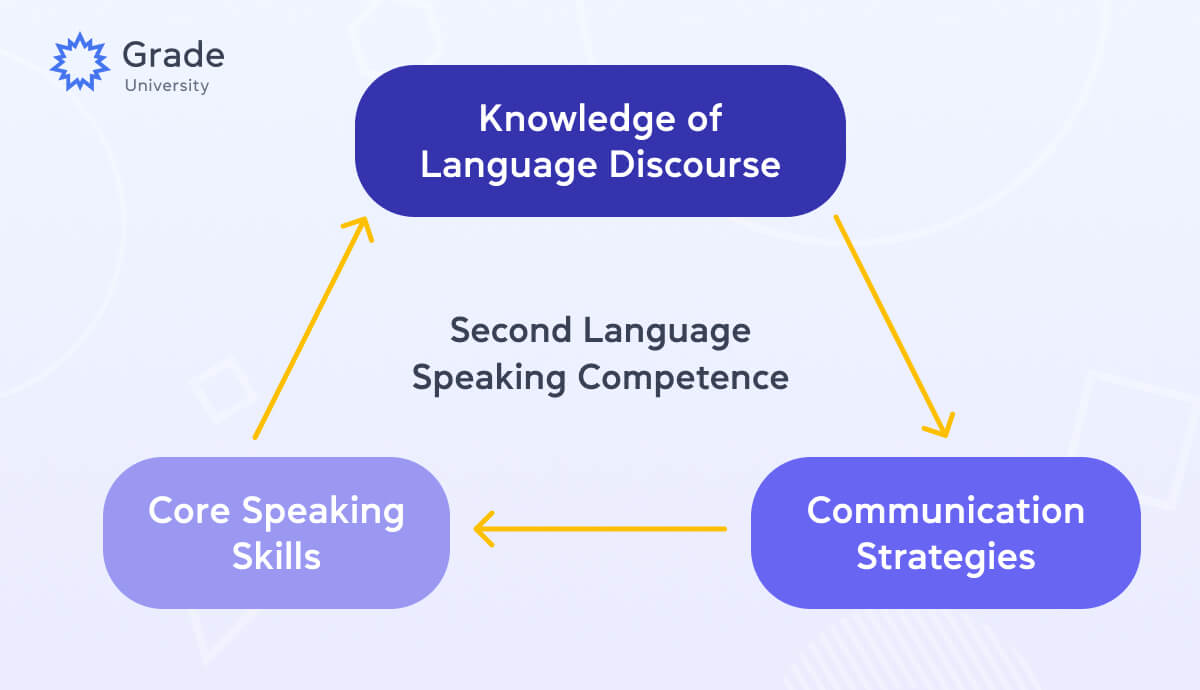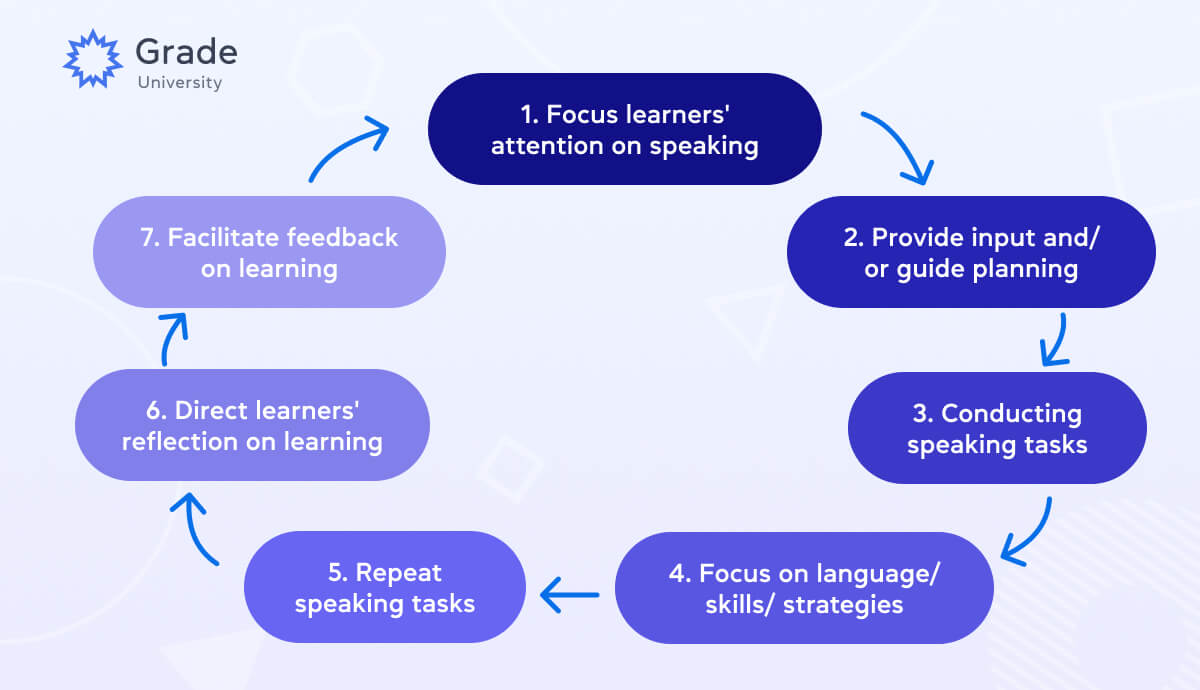Find a perfect article: websites to spice up reading tasks from the textbooks
- Reading
- Vocabulary
- Teaching qualifications
- Activities
- Tips & Strategies
- Methodology

25.07.2023
The majority of students usually take up English classes to satisfy one main goal which is to start speaking, especially to communicate with their colleagues or business partners effectively or travel and feel free verbally. Learning how to speak and teaching (or tutoring) conversational English are equally challenging tasks, though.
Teachers often face a lot of difficulties while working on conversational speaking with their students, wondering which activities to choose, how to organize the studying process for different levels and more. That is why today we will not only look through some most popular questions but also will try to give some answers.
First and foremost, let’s focus on the term. Indeed, is it so easy to explain what we define as “conversational English”?
According to some researchers, conversational English is the language also known as “basic interpersonal communication skills” (BICS), which is frequently associated with the usage of expressions and gestures that are related to immediate and specific social activities and interactions. Simply put, it is the language that students face in everyday casual communication.
Speaking is one of the most challenging abilities for a student to develop, according to Pollard. When one considers the factors that go into speaking – ideas, content, language, syntax and vocabulary, pronunciation, as well as listening to and responding to the other person – this is not surprising.
That is why instead of pushing the students toward rote learning, language teachers must place a high priority on teaching how to speak. They should also strive to create a diverse atmosphere that fosters meaningful dialogue.
With this perspective in mind, numerous speaking methods, some of which we are also going to discuss, may greatly help learners in acquiring basic social skills required for life. So, obviously, the role of the teacher is extremely important in this process.
Teaching conversational English is a task that requires a lot of theoretical and practical knowledge. However, the particular requirements for becoming a spoken English teacher may change based on the institution or organization you want to work for.
Still, the teacher is supposed to have a high level of English, a bachelor’s degree, and some previous teaching experience. Also, having a teaching certification greatly improves your chances of becoming an English teacher, especially if you don’t have a degree.
In addition to all general requirements, it is also important to make sure that you possess certain soft skills to successfully work as a conversational English teacher. Here is a set of skills that, we believe, a teacher of conversational English should develop.
As we have already mentioned, speaking is one of the hardest skills to develop, so the teacher must be able to put students at ease while speaking to them if they want students to speak out in class. That is why you should pay close attention to building rapport with your students and creating a space where they feel free to speak out and make errors in their English.
And yes, it requires having so-called “people skills”: the ability to be an active listener and understand precisely what bothers your students, what motivates them, etc. Emotional intelligence and cultural sensitivity also play a great role here.
More tips on how to build rapport!
You must, of course, be a master of conversations if you want to help your students with developing their English speaking abilities through conversation. This entails the capacity to:
On top of that, it implies that you have a natural sense of how a discussion should progress and flow, as well as feeling the timing and obtaining the technique for subject switching.
Since so much communication takes place nonverbally, whether you are teaching conversational English in person or online, you must be skilled at communicating via body language, gestures, facial expressions, and other nonverbal clues. This is especially important when it comes to encouraging your students to feel comfortable speaking out.
You can never predict where a conversation will lead, and even if you have a list of subjects in mind for an endless speaking club, you can never foresee what your student will say about each other’s opinions or where the conversation will naturally drift. Teachers of conversational English must be particularly good at improvising and adjusting when discussions take unexpected twists.
Practicing conversational English and participating in a real dialogue are basically the same. Today you are asked about your favorite American writer and tomorrow you will have to express your opinion on AI or human rights activism. That is why teaching conversational English is not only about having perfect knowledge of the language and methodology. It is also about being an interesting, well-educated person and a lifelong learner.

Solve teacher talk issues!
Enrol today!Speaking instruction is a component of English language training that is frequently undervalued and should be addressed deliberately and systematically. While teachers may give a variety of speaking exercises in the classroom, these exercises could really be more like “doing speaking” than “teaching to speak.” Many researchers believe that an effective speaking teacher must comprehend:
Here are some ideas on that.
Teachers need to be educated about what speaking competence includes so they can teach speaking organically and properly. Speaking is a “combinatorial skill,” according to Johnson, that “involves doing a number of things at the same time.”
A model of second language speaking proficiency is shown in Figure 1 below and consists of knowledge of language and discourse, fundamental speaking abilities, and communication and discourse tactics. In order to develop spoken language and make it fluent, correct, and socially acceptable, speaking in a second language requires developing the capacity to apply these components:

Figure 1. Components of second language speaking competence
Knowledge of Language Discourse means that students are supposed to master the sound patterns, know grammar and vocabulary, and understand how to combine chunks of the language so it is pragmatically and socially appropriate.
The term “сore speaking skills” describes the gradual development of the process of “digesting” speech and therefore becoming more and more fluent. This process includes dealing with speech rate, pausing, formulaic language, etc.
Finally, communication strategies imply the development of such strategies as:
According to Goh and Burns, there is a so-called “teaching-speaking cycle” which highlights many crucial ideas that educators may use to help their students, taking into account all the things stated above. Here is a piece to study:

Figure 2. Teaching-speaking cycle
Apart from following the strategies mentioned above, you may also discover other common approaches to teaching conversational English.
It is a technique of language tutorial based on the idea that learning a language is a process of habit building.
It is claimed that ALM is a technique for teaching language through dialogues that places an emphasis on the student's habit-building through repetition and memorization of grammatical structures using replacements.
Principles of the Audio-lingual Method include:
According to CLT, the objective of language instruction should be communicative competence rather than translation and memorizing a set of rules which makes communicative competence the final goal of studying.
Here are some examples of the traits of communicative language teaching:
Coperative Language Learning is a system of specific teaching and learning techniques rather than a strategy. It states that students should participate actively in the learning process in small group settings to optimize their individual and group learning.
Cooperative learning is basically a general word that relates to a variety of methods for planning and carrying out classroom education. That is why almost every teacher might use cooperative learning in a way that aligns with their teaching ideas and methods.
Some common ways of using Cooperative Language Learning is implementing acting, group games and projects, debates, interviews and role plays into your conversational English lesson.
What games should you play during the lesson?
However, even with perfect knowledge of approaches and strategies teachers sometimes face some difficulties in certain situations during their conversation English classes. Here are some of our tips to note!
While a lot of professionals choose to come up with the questions during the discussion, it is a much better idea to plan all possible questions in advance as well as potential twists and turns of the conversation. In this way, you’ll never find yourself in a situation of not knowing how to react or switch the topic.
This tip is especially useful if you only start your journey of conducting conversational English teaching.
The best way of not facing silence is to ask for students’ opinions and not to take “no” or “I don’t know” as an answer. Every person has some ideas to share and some beliefs to debate on. Don’t be afraid to insist on expressing some of them. Some students may just need some additional encouragement which eventually gives them a boost to talk and feel freer.
Knowing where to prompt is an important skill that helps avoid silence, unwanted shifting away from the topic or even some arguments! Be aware of your moderation role and don’t hesitate to contribute to the discussion if you feel like it is important or needed.
Last but not least, take notes while your students talk. In this way, you don’t lose the important ideas that students express and can easily recall them in order to come back to some of them if they were especially important or interesting.
In this way, you don’t really have to come up with new questions on your own. You may emphasize certain ideas of your students and therefore refresh the pace and tone of the conversation.
Moreover, the students also feel heard and needed, they feel that their teacher is listening to them and their ideas.

Preparing your students for speaking exams
Things you should know!As you may see, conducting a conversational English class is not an easy task. However, it is an extremely interesting and rewarding process once you find your own approach, pace, and style. And that is exactly what we encourage you to do together with us.
What practice techniques does the Audio-Lingual Method emphasize?
It's not necessary to take notes while your students talking.
Arina Kravchenko
Author
Teacher of General English & IELTS
Comments
Leave your comment